The Efficacy of Silver Mesh Dressings in Wound Care
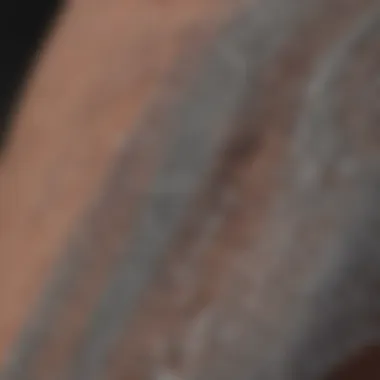

Overview of Research Topic
Brief Background and Context
The use of silver in wound care has burgeoned over recent years, prompted by its unique antimicrobial properties and its ability to enhance healing processes. Silver mesh dressing is a relatively novel approach that harnesses these properties, offering a moldable and flexible solution for various wound types. The integration of silver mesh dressing into wound management reflects a shift towards more advanced materials aimed at improving patient outcomes.
Importance in Current Scientific Landscape
In today's medical environment, the need for effective wound care solutions is crucial. With the rise in chronic wounds related to diabetes, pressure ulcers, and surgical incisions, understanding the role of silver mesh dressings is increasingly relevant. Preliminary studies suggest that these dressings allow for better moisture retention while actively combating bacterial infections. Moreover, the exploration of silver’s mechanism points to a synergistic effect in healing processes, indicating broader implications for medical treatments.
Methodology
Research Design and Approach
This article employs a systematic review methodology that consolidates existing research on silver mesh dressings. By analyzing a variety of sources, including peer-reviewed studies, clinical trials, and case reports, a comprehensive overview of the current understanding of silver's efficacy in wound care is provided. This approach ensures that the discussion is grounded in substantial empirical evidence, enriching the narrative.
Data Collection Techniques
Data was collected through various techniques, primarily involving:
- Literature Review: Aggregating studies from medical journals that specifically evaluate silver mesh dressings.
- Case Studies: Reviewing documented outcomes from healthcare institutions that have implemented these dressings in clinical settings.
- Expert Interviews: Consulting with healthcare professionals specializing in wound management to gather insights not always captured in academic literature.
This structured method allows for a nuanced understanding of silver mesh dressings, contributing valuable insights into their clinical applications.
"The emergence of innovative dressing options is transforming the landscape of wound care, addressing the persistent challenge of infection and delayed healing."
Foreword to Wound Management
Wound management is a critical aspect of healthcare that significantly impacts patient outcomes. Understanding how to effectively manage wounds can decrease complications and promote faster healing. This section sheds light on the essentials of wound management and its integral role in using silver mesh dressings.
Understanding Wounds
Wounds can be classified into various categories based on their cause, depth, and healing process. They can be acute, resulting from accidents or surgeries, or chronic, which persist due to underlying conditions such as diabetes. The wound healing process involves several overlapping stages: hemostasis, inflammation, proliferation, and remodeling. Each phase is pivotal, as disruptions can lead to infections or delayed healing. Proper wound assessment and care are essential to facilitate this process, ensuring an appropriate healing environment.
Importance of Proper Dressing
Choosing the right dressing for a wound is crucial. It serves multiple functions, including protecting the wound from infection, maintaining a moist environment, and promoting healing. Improper dressing can lead to complications such as infection, increased pain, and slower healing. Silver mesh dressings, in particular, are gaining attention for their unique properties that enhance the healing process. They not only protect the wound but also leverage silver's natural antimicrobial properties, helping to reduce infection rates and improve overall patient comfort. Thus, understanding proper dressing and its application is foundational in contemporary wound management.
Overview of Silver in Medicine
The topic of silver in medicine is significant in the context of wound care and management. Silver has a long-standing history of use that underscores its therapeutic qualities. As we explore silver’s applications, it’s essential to highlight the elements that contribute to its effectiveness, particularly in aiding the healing of wounds. Silver has become more than just a historical substance; its relevance in contemporary medical practices cannot be overlooked.
Historicity and Use of Silver
Historically, silver has been recognized for its medicinal properties. Ancient civilizations utilized silver for its presumed health benefits. For example, in Roman times, soldiers would carry silver coins, believing that they had protective effects against infections. Furthermore, various cultures have used silver in different forms to treat ailments, from water purification to wound treatment.
In modern medicine, silver usage has evolved. It is integrated into numerous products, including dressings, creams, and even surgical instruments. The adaptation of silver in contemporary wound management is a culmination of centuries of empirical evidence that supports its efficacy in reducing infection and promoting healing.
Antimicrobial Properties of Silver
Silver's primary benefit lies in its antimicrobial properties. Silver ions possess the ability to disrupt bacterial cell walls, leading to cellular death. This attribute makes silver a powerful agent against a wide range of pathogens, including antibiotic-resistant strains. The mechanisms through which silver exerts these effects have been studied extensively.
- Bacterial Cell Disruption: Silver ions bind to the bacteria, interfering with their metabolic processes.
- Biofilm Disruption: Silver can effectively reduce the formation of biofilms, which are aggregations of bacteria that resist treatment.
- Inflammation Reduction: By minimizing bacterial load, silver helps in reducing inflammation and encouraging faster healing.
"Silver has shown remarkable effectiveness in scenarios where traditional antibiotics may fail."
In summary, the incorporation of silver in medical applications is not just a historical curiosity; it holds substantial promise in enhancing wound care protocols. Understanding the historic context and the underpinning science offers critical insights into how silver mesh dressing can be effectively integrated into modern healthcare practices.
Silver Mesh Dressing: Composition and Variants
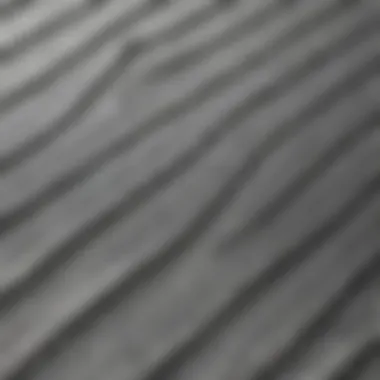
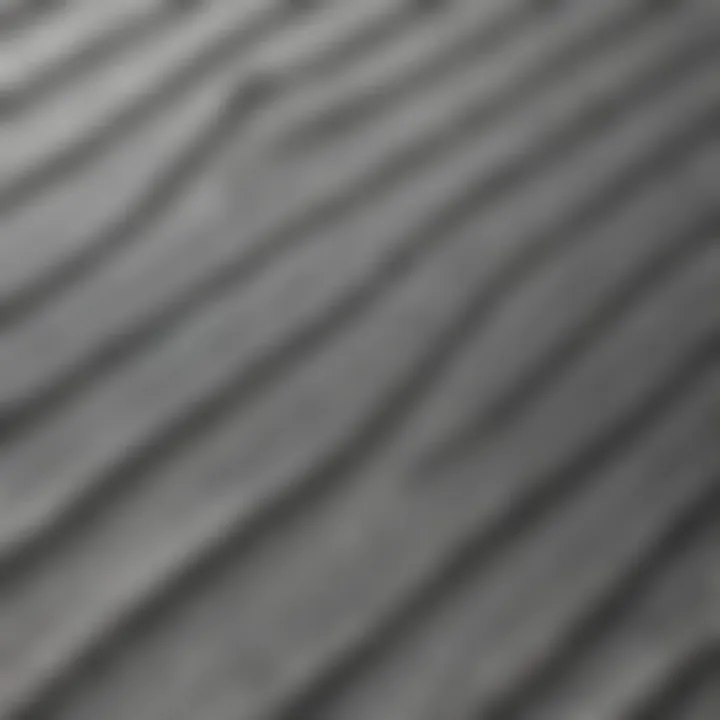
Understanding the composition and variants of silver mesh dressings is crucial in the context of wound management. This section aims to dissect the materials that make up these dressings and their various forms, highlighting their significance, benefits, and considerations. The composition of a dressing directly influences its functionality, antimicrobial properties, and overall effectiveness in promoting wound healing. Variants of silver mesh dressings cater to different types of wounds, ensuring that healthcare professionals can select the most appropriate option based on the specific needs of the patient and the wound.
Materials Used in Silver Mesh Dressings
Silver mesh dressings commonly consist of several materials that contribute to their effectiveness in wound care. The fundamental element is silver, known for its antimicrobial properties. Silver ions, when released in a controlled manner, can eradicate a wide range of pathogens, thereby reducing the risk of infection.
The mesh itself can be made from materials such as polyester or nylon, which provide structural integrity and ensure that the silver is evenly distributed across the dressing. The incorporation of absorbent layers made from materials like polyurethane or alginate enhances the dressing's ability to manage exudate, keeping the wound bed moist while absorbing excess fluid. This combination of materials helps create an environment conducive to healing, which is essential in controlling infection and promoting regeneration of skin tissues.
Types of Silver Mesh Dressings
Different types of silver mesh dressings are available, each with unique characteristics suited for various clinical scenarios. The main types include hydrogel dressings, foam dressings, and non-adherent dressings. Understanding these types can aid healthcare professionals in making informed decisions tailored to individual patient needs.
Hydrogel dressings
Hydrogel dressings are moisture-retentive and known for their soothing properties. The high water content in hydrogel dressings helps to maintain a moist wound environment, which is critical for optimal healing. This type of dressing is particularly beneficial for dry or necrotic wounds, as it can assist in autolytic debridement.
A key characteristic of hydrogel dressings is their ability to absorb exudate while delivering silver ions to the wound. However, one must consider that while they promote hydration, they may not provide the same level of absorbency when managing highly exudative wounds. Additionally, there is a potential for the dressing to adhere to the wound if not monitored adequately, necessitating careful application and monitoring.
Foam dressings
Foam dressings are another variant that provides excellent cushioning and absorbency. They are particularly effective in managing moderate to heavy exudate due to their foam properties, which trap fluids within their structure. The addition of silver enhances their antimicrobial activity, making them suitable for infected or at-risk wounds.
The primary advantage of foam dressings is their ability to conform to various wound shapes while offering a barrier against external contaminants. However, one limitation is that they may feel bulky to some patients, which can affect comfort and mobility. It's important to balance the need for protection and absorbency against patient comfort, making proper patient assessment essential.
Non-adherent dressings
Non-adherent dressings are designed to minimize trauma upon removal, reducing pain and trauma to the wound bed. They often incorporate a gentle layer that prevents the dressing from sticking to the wound, allowing for pain-free changes and reducing disruption to the healing tissue.
The key advantage of non-adherent dressings is their ability to provide a protective barrier while facilitating easy inspection of the wound. This type of dressing is well-suited for delicate wounds or those in sensitive areas. However, the potential drawback is that they may not be as effective in managing significant exudate, which can lead to leakage or dressing failure if not used properly.
"The choice of dressing type should align not only with the wound’s characteristics but also with the patient’s overall comfort and mobility".
In summary, the composition and variants of silver mesh dressings play a pivotal role in wound management. Each type offers distinct advantages and potential drawbacks. Familiarity with these materials and types enables practitioners to select the most appropriate dressing based on individual wound conditions and overall treatment goals.
Mechanism of Action in Wound Healing
Understanding the mechanism of action in wound healing is essential for grasping how silver mesh dressings contribute to effective recovery. This section explores two main aspects: the role of silver ions and the promotion of cell proliferation. Both elements are vital in determining the efficacy of silver mesh dressings in clinical practice.
Role of Silver Ions
Silver ions play a critical role in the wound healing process due to their well-documented antimicrobial properties. When silver is applied to a wound, it releases ions that can penetrate bacterial membranes, disrupting their cellular functions. This activity leads to the inhibition of bacteria growth, reducing the risk of infection, which is a significant concern in wound management.
Additionally, silver ions assist in the reduction of biofilm formation. Biofilms are clusters of microorganisms that adhere to surfaces and are often resistant to conventional treatments. By preventing biofilm development, silver ions enhance the cleaning action on the wound site, enabling the healing process to proceed more effectively.
"Silver ions significantly lower the bacterial load, thus paving the way for better healing outcomes."
Furthermore, silver ions also interact with, and promote, various biological responses involved in wound repair. These include mediating inflammation and promoting angiogenesis—the formation of new blood vessels—which is vital for delivering nutrients and oxygen to the healing tissue.
Promotion of Cell Proliferation
Cell proliferation is an essential aspect of wound healing. Silver mesh dressings not only inhibit harmful organisms but also encourage the growth of beneficial cells at the wound site. Studies indicate that silver has an effect on fibroblast proliferation. Fibroblasts are cells crucial for connective tissue formation—without them, wounds cannot heal properly.
The presence of silver compounds has been shown to stimulate fibroblasts, leading to increased production of collagen, a key component of the extracellular matrix. This scaffolding is necessary for new tissue growth and repair. By enhancing fibroblast activity, silver mesh dressings facilitate better wound closure and improve overall healing.
Moreover, silver's influence extends to keratinocyte activities. These cells are vital for re-epithelialization, the process through which new skin cells cover the wound, effectively closing it and forming a protective barrier against environmental factors. Enhancing the activity and proliferation of keratinocytes therefore aids in timely wound recovery.
In summary, the mechanisms by which silver contributes to wound healing extend beyond mere antimicrobial activity. The interplay between silver ions and cellular responses forms a crucial part of the natural healing process, making silver mesh dressings a significant asset in modern wound management.
Benefits of Silver Mesh Dressings


The use of silver mesh dressings in wound care has gained much attention in recent years. Their significance becomes evident when considering factors such as antimicrobial properties, infection prevention, and patient comfort. With an increasing incidence of wounds that are resistant to conventional therapies, the benefits of silver mesh dressings need thorough exploration.
Enhanced Antimicrobial Activity
Silver has proven to be an effective antimicrobial agent. Its mechanism involves the release of silver ions, which disrupt bacterial membranes and hinder their metabolic functions. This characteristic makes silver mesh dressings particularly beneficial for wounds infected or at risk of infection. In clinical settings, studies show that wounds treated with silver mesh dressings exhibit significantly lower levels of bacterial colonization compared to those managed with standard dressings. This enhances the healing environment, fostering quicker recovery. Additionally, silver's broad-spectrum activity combats various pathogens, including multi-drug resistant strains. Thus, the incorporation of silver mesh dressings can provide a crucial advantage in modern wound care protocols.
Reduction in Infection Rates
Infection remains a major complication in wound healing. Silver mesh dressings significantly lower infection rates, protecting the wound from various external pathogens. Research indicates that these dressings can reduce the frequency of infections by more than 50% when compared to traditional dressing materials. This reduction is vital, especially in chronic or surgical wounds where infection can severely delay healing. Patients who utilize silver mesh dressings often experience shorter hospital stays and reduced need for adjunctive therapies, such as antibiotics. As healthcare evolves, minimizing infection within wound management becomes paramount, making silver mesh dressings an essential tool.
Pain Management and Patient Comfort
Pain management plays a crucial role in overall patient well-being during wound care. Silver mesh dressings provide an advantage in this regard. The moist environment they create can help reduce wound pain and facilitate easier dressing changes. Patients frequently report a decrease in pain during the application of these dressings. Furthermore, the non-adherent nature of certain variants enhances comfort by preventing damage to newly formed tissue when removing the dressings. The combination of effective antimicrobial action, along with a commitment to patient comfort, positions silver mesh dressings as a preferred choice in clinical settings.
"Silver mesh dressings not only offer superior wound healing characteristics but also embrace patient comfort, making them a fundamental part of modern wound management strategies."
Limitations and Considerations
Recognizing the limitations and considerations of silver mesh dressings in wound management is crucial for healthcare professionals. While these dressings offer significant benefits, understanding their limitations aids in making informed decisions regarding patient care. This section highlights the potential for allergic reactions, cost implications, and challenges associated with the application of silver mesh dressings.
Potential for Allergic Reactions
One important consideration is the potential for allergic reactions. Although silver has been used for centuries in various medical applications, some patients may exhibit sensitivity to silver ions. Symptoms may range from mild skin irritation to more severe allergic responses. Healthcare providers should evaluate the patient's history, particularly if they have a known hypersensitivity to silver or related compounds.
To minimize the risk of allergic reactions, clinicians should conduct a thorough assessment by:
- Reviewing patient history for any known allergies.
- Performing patch tests for high-risk individuals.
- Monitoring patients after the first application to detect any adverse reactions early.
This step is vital to ensure patient comfort and safety while using silver mesh dressings.
Cost Implications
Cost is another significant factor to consider. Silver mesh dressings tend to be more expensive than conventional dressings. The higher cost may deter some healthcare facilities from adopting these advanced materials into their wound care protocols. Analyzing the cost-to-benefit ratio is essential before deciding on the use of silver mesh dressings.
When addressing cost implications, healthcare providers can:
- Evaluate long-term benefits, such as reduced infection rates and faster healing times, which can lead to overall cost savings in wound management.
- Consider bulk purchasing options to reduce expenses.
- Explore insurance coverage that may reimburse these types of dressings.
Investing in silver mesh dressings may lead to improved patient outcomes that justify the initial expense, making it worthwhile for many facilities.
Application Challenges
Application of silver mesh dressings can present challenges that healthcare professionals must navigate. Factors such as the wound type, size, and condition can impact how easily and effectively these dressings are applied. Some studies suggest that improper application may lead to inadequate coverage, which can compromise wound healing and increase infection risk.
To successfully apply silver mesh dressings, clinicians should:
- Ensure proper wound preparation to support adhesion and effectiveness.
- Follow specific guidelines for application, including the use of other secondary dressings when necessary.
- Educate patients on caring for their dressings to maintain adherence and avoid complications.
Sharing best practices and providing training for staff on the proper use and handling of silver mesh dressings can help overcome these hurdles and maximize their benefits in wound care.
Best Practices for Application
The application of silver mesh dressings in wound care requires careful attention to detail and understanding. Best practices ensure effective healing and minimize risks associated with improper application. By adhering to established guidelines, healthcare professionals can optimize the treatment process, thus enhancing patient outcomes. It is vital to consider the following elements when applying silver mesh dressings:
- Consistency in Technique: Implementing uniform methods across different cases fosters familiarity and precision.
- Patient Comfort: Prioritize approaches that do not induce unnecessary discomfort.
- Infection Control: Proper application techniques significantly reduce the risk of infection.
Adopting these guidelines can lead to improved healing times and enhanced clinical outcomes, validating the relevance of best practices in the use of silver mesh dressings.
Wound Preparation Guidelines
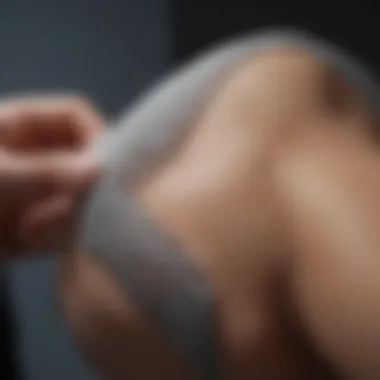
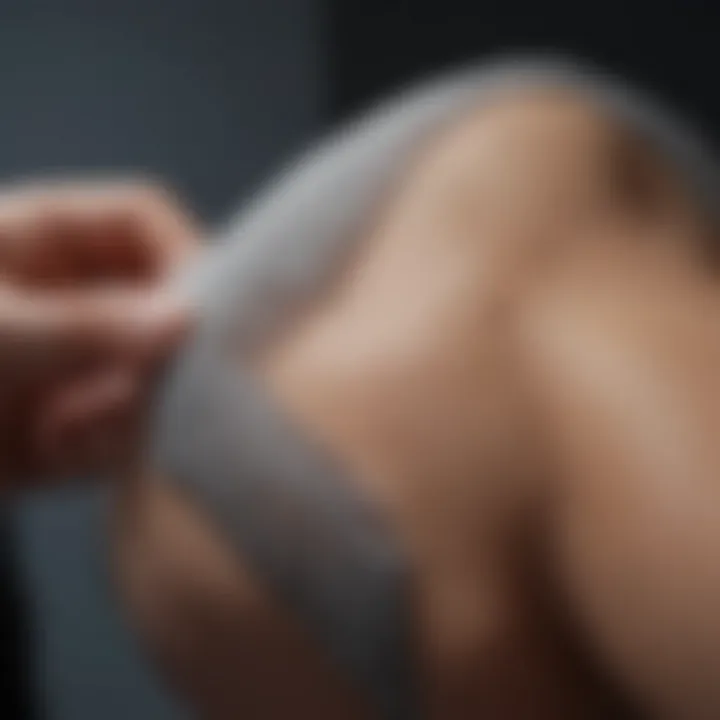
Wound preparation is the foundational step prior to the application of silver mesh dressings. Effective preparation can prevent complications and promote better adhesion. Guidelines include:
- Cleaning the Wound: Use appropriate antiseptic solutions to thoroughly cleanse the area. This not only reduces bacterial load but also prepares the skin for the dressing.
- Assessing the Wound Bed: Evaluate the condition of the wound bed. Identify any necrotic tissue that may need debridement to promote healing.
- Moisturizing: Where necessary, apply a moisture-retentive gel to avoid dressing adherence to the wound surface, which can cause pain upon removal.
Adhering to these wound preparation guidelines sets the stage for a successful application of the silver mesh dressing.
Application Techniques
Proper application techniques are crucial. Inconsistencies can lead to inadequate therapeutic effect or patient discomfort. Recommended techniques involve:
- Positioning the Dressing: Lay the dressing gently over the cleaned wound site without forcing it into place. This helps maintain the integrity of both the dressing and the wound.
- Securing the Dressing: Use appropriate fixation methods that align with the type of silver mesh dressing. This could involve adhesive strips or additional fixation devices as needed.
- Monitoring for Conformity: Ensure that the dressing conforms well to the contours of the wound. This ensures comprehensive coverage and promotes optimal healing.
Employing these techniques minimizes complications and maximizes the benefits of the silver mesh dressing in wound healing.
Monitoring and Maintenance
Effective monitoring and maintenance of silver mesh dressings play a vital role in ensuring continued healing. Regular assessments help to identify potential issues early on. Important considerations include:
- Daily Inspection: The dressing site should be inspected daily for signs of infection, such as increased redness or fluid leakage. Prompt intervention is key in managing any emerging issues.
- Dressing Changes: Based on clinical indications and manufacturer guidance, replace or adjust the dressings as necessary. Keeping the dressing clean and dry is crucial for optimal healing.
- Patient Feedback: Engage patients in monitoring their own wounds. They can provide valuable information regarding pain levels or comfort, which can guide treatment adjustments.
The effectiveness of silver mesh dressings greatly depends on strict adherence to monitoring and maintenance protocols, ensuring that the healing environment remains optimal throughout the treatment process.
Case Studies and Clinical Trials
The role of case studies and clinical trials is crucial in evaluating the effectiveness of silver mesh dressings for wound management. These types of research not only provide empirical evidence but also highlight real-world outcomes. By examining specific cases and larger studies, healthcare professionals gain insights into how these dressings perform across diverse patient populations and wound types. This helps in establishing the reliability of silver mesh dressings in promoting healing and preventing infections.
Studies Demonstrating Efficacy
Numerous studies have been conducted to pinpoint the efficacy of silver mesh dressings. One notable study published in the Journal of Wound Care reported on patients with chronic wounds treated with silver mesh dressing compared to traditional methods. Results indicated a significant reduction in healing time and infection rates among those using silver mesh. Another study in The American Journal of Surgery also found that silver mesh facilitated faster granulation tissue formation. These findings collectively underscore the advanced healing properties of silver-infused materials.
Patient Outcomes
Patient outcomes are a key consideration when analyzing the success of any medical intervention. With silver mesh dressings, reports show improved patient comfort and satisfaction. A clinical trial involving patients suffering from diabetic ulcers demonstrated notable improvements in pain levels and overall quality of life during treatment. Moreover, follow-up assessments revealed a lower recurrence rate of infections among those treated with silver mesh, indicating long-term benefits. This data speaks to not only the efficacy of silver mesh dressings but also their potential to substantially enhance patient care.
"Clinical evidence validates that the incorporation of silver mesh dressings not only accelerates wound healing but also promotes better patient experiences throughout the recovery process."
Future Directions in Wound Care
The landscape of wound management is continuously evolving, marked by innovations and techniques aimed at optimizing healing. Addressing future directions is crucial for both practitioners and patients, as these developments can significantly enhance treatment outcomes. Focusing on advancements in technology and integrative approaches offers insight into how care can become more effective and efficient.
Advancements in Silver Technology
Silver remains at the forefront of modern wound care, and recent advancements in silver technology are poised to enhance its application in clinical settings. New formulations aim to improve the release of silver ions, thus ensuring sustained antimicrobial activity over extended periods. These advancements not only improve healing but also minimize the need for frequent dressing changes, reducing discomfort for patients.
Moreover, researchers are exploring nanotechnology, which enables the use of silver nanoparticles. These tiny particles exhibit enhanced antibacterial properties due to their larger surface area to volume ratio. As a result, silver nanoparticles can effectively eliminate a broader range of pathogens, thus protecting wounds from infections more efficiently than traditional dressings. The potential of combining silver with other therapeutic agents is also being investigated, which could lead to synergistic effects in wound healing.
Integrative Approaches to Wound Healing
Moving forward, the integration of various treatment modalities in wound care is gaining momentum. This approach emphasizes collaboration between multiple specialties to provide comprehensive care. For instance, combining silver mesh dressings with biologic therapies and nutritional support could optimize healing outcomes.
- Multidisciplinary Teams: The formation of multidisciplinary care teams, including nurses, physicians, dietitians, and physical therapists, enhances the capacity to address the complex needs of patients with chronic wounds.
- Patient-Centered Care: Adopting a patient-centered model encourages individuals to participate in their care decisions, fostering adherence to treatment regimens. This model enhances satisfaction and improves healing times.
- Technological Integration: The use of telemedicine and mobile health applications for remote monitoring provides patients with access to care from home. This is especially pivotal for those with mobility issues or those living in remote areas.
The future of wound care is bright, with advancements in silver technology and integrative approaches setting the foundation for more efficacious and personalized treatment strategies. Embracing these changes can lead to improved patient outcomes and more efficient healthcare delivery.
Closure
The conclusion serves as a pivotal synthesis of the insights presented throughout this article. It encapsulates the significant role that silver mesh dressings play in modern wound management, showcasing their unique benefits and considerations. Notably, these dressings combine efficacy with enhanced healing properties, establishing them as valuable tools in medical practice. Their ability to reduce infection rates, create a conducive environment for healing, and maintain patient comfort makes them essential in treating various wound types.
Summary of Key Points
- Antimicrobial Properties: Silver ions provide strong antimicrobial effects, crucial for preventing infections in wounds.
- Enhanced Healing: Silver mesh dressings promote cell proliferation, resulting in quicker recovery times.
- Versatile Applications: Available in various forms—hydrogel, foam, and non-adherent—these dressings can be tailored to different wound types and patient needs.
- Considerations for Use: While largely beneficial, care must be taken to address potential sensitivities and costs associated with silver mesh dressings.
Final Thoughts on Silver Mesh Dressings
Silver mesh dressings symbolize a significant advancement in wound care technology. Their blend of effectiveness and patient comfort reaffirms their place in the toolkit of healthcare professionals. As clinical studies continue to unveil the myriad benefits of silver in wound management, prospective applications could include novel combinations with other therapeutic treatments.
In summary, the integration of silver mesh dressings into standard care protocols not only enhances patient outcomes but also opens pathways for new research in wound healing. As we look ahead, it is essential for practitioners to remain informed and adaptable, ensuring that patient care remains at the forefront of medical practices.



